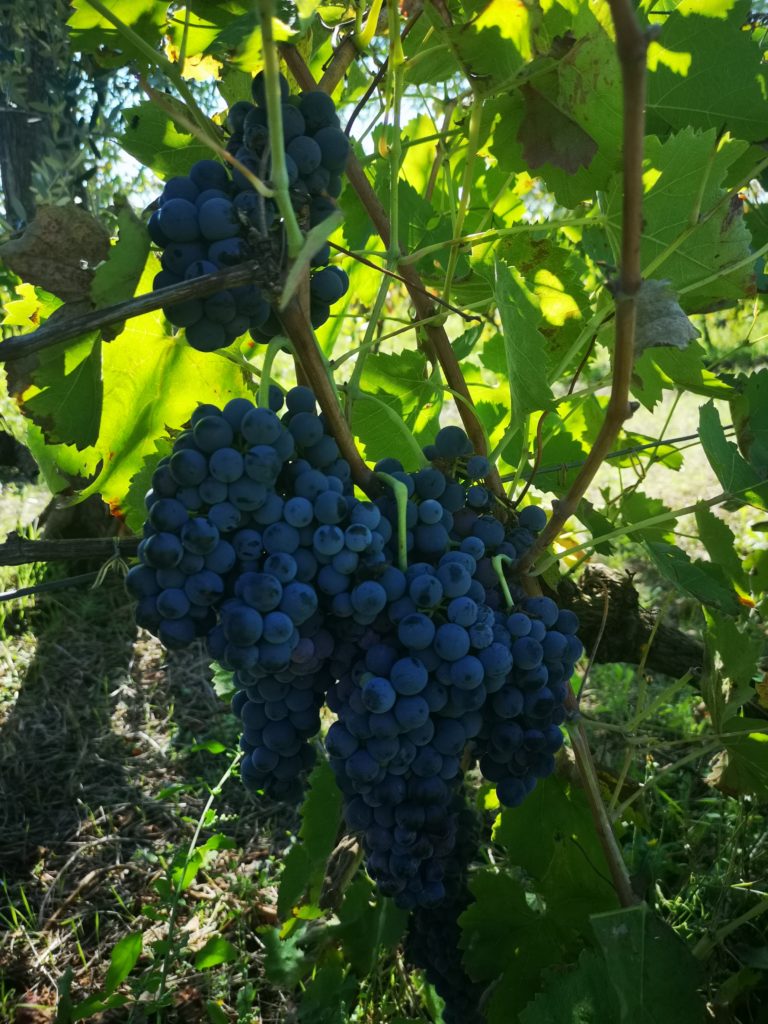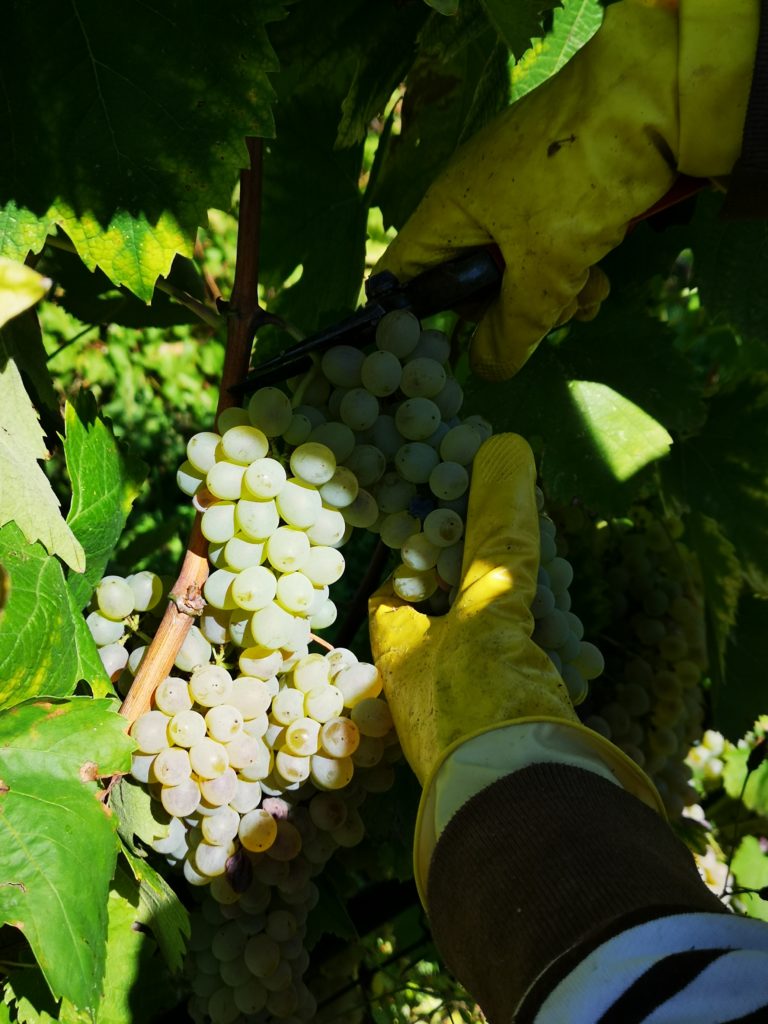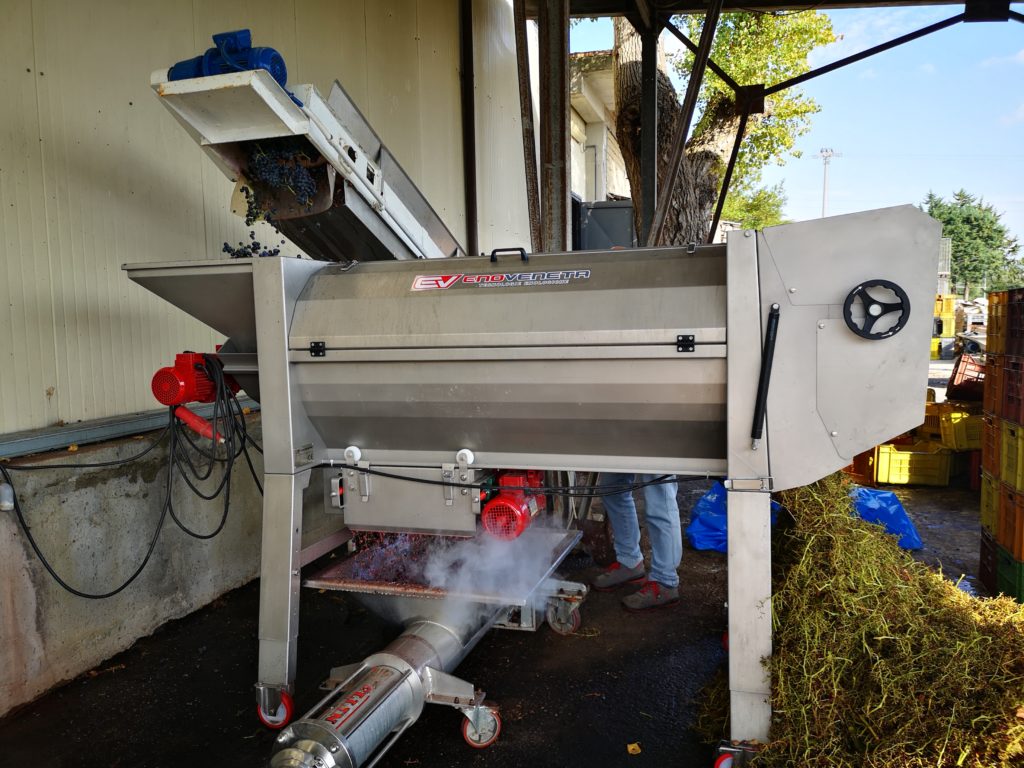by LUCA PEDICINI, trainee of the IFTS PROJECT - Marketing, Comunication and Valorisation of Wine & Oil
THE PERIODS AND PHASES OF THE HARVEST
Today as in the past, the grape harvest is one of the rituals of agriculture that most fascinates man, permitting his participation in a natural ancestral process. For millennia, the able hands of farmers have performed the same gestures, in the same season, giving rise to that "nectar of the gods", wine, that has always been associated with joyous and sacred occasions.

HARVEST PERIODS
Harvest is the term used to refer to the process of harvesting grapes for winemaking. The right time for harvesting is when the grape reaches the right degree of ripeness. The periods for harvesting are essentially three: August-September, September-October, and October-November, for late-ripening grapes.
THE HARVEST

The first phase consists in harvesting the grapes, to be carried out in the cooler hours, by hand or mechanically: cut with special shears and deprived of their leaves, the best bunches, free of mold and rotten grapes, are collected in crates with a maximum capacity of 25/30 kilos to prevent the grapes from being too tightly packed. Once filled, the crates are taken to winery for pressing. It is essential that as little time as possible elapses between the harvesting and the pressing, to prevent the grapes from deteriorating: firm bunches of grapes, with the skin completely intact, are the indispensable premise for obtaining a good wine.
GRAPE-PRESSING
The grapes are then transported to the winery where they will be pressed. Before the actual pressing, the bunches are placed onto conveyer belts and enter into the destalker, the machine that separates the grapes from the stem, while still keeping the grapes intact. This process is fundamental due to the fact that if the stalks are crushed, they would release an excess of tannic substances with a woody and mouth-puckering taste. Only then, is it possible to move onto the pressing phase, which from 1850 up until 1887, the year in which Giuseppe Garolla invented the first centrifugal destalker, this was performed manually, and it was not possible to separate the grapes from the stalks. Alternatively, pressing and destalking machines can be used, which are able to press the grapes and at the same time discard the stalks.

FERMENTATION
The must obtained from the pressing is pumped into tanks called fermenters, which until 1975 when stainless steel began to be used, were wooden barrels and concrete tanks, and it is here that fermentation begins. Fermentation can be of three types: red wine fermentation, which naturally gives rise to red wines, requires that the must remains in contact with the skins, in order to permit the dissolution of the polyphenols and the aromas contained in the skin and in the seeds. White fermentation, on the other hand, produces white wines and is obtained by immediately separating the must from the skins and the grape seeds: the wines obtained will therefore be almost free of tannins, have fruity aromas and a fresh and delicate taste. Finally, there is the vinification in rosé of red grapes which includes a period of maceration of the solid parts in the must, for a short period, circa 24 to 36 hours.
THE FINAL PHASES OF THE HARVEST
Once fermentation is complete, perhaps one of the most characteristic phases begins, that of refermentation and aging, giving rise to the most diverse wines, from sparkling wines to meditation wines, depending on the process followed. The result will in any case be the fruit of months of work, of centuries of traditions handed down from from father to son to produce a nectar that is an expression of the history and characteristics of its territory of origin, retracing every year this agricultural ritual so much exalted by the poets of every epoch.
